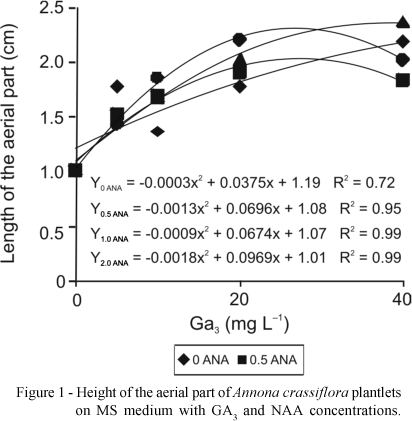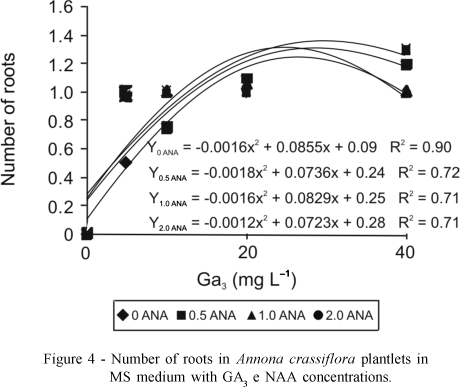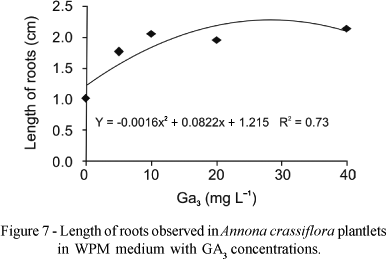Annona crassiflora Mart known as 'araticum', 'marolo' or 'field araticum' is a typical fruit from the Cerrado biome of Brazil with socio-economic and medicinal importance. Normally, Annona crassiflora is propagated through seeds. However, due to a deep dormancy that the seeds display at dispersion and the difficulty to obtain uniform plants in a short time period, micropropagation may be a feasible alternative. Concentrations of gibberellic acid (GA3) and naphthalene-acetic acid (NAA) and their interactive effects on in vitro seed germination and seedling development of Annona crassiflora were studied. Mature fruits of Annona crassiflora were depulped and the seeds washed in clear water and dried at room temperature. Seed coat was removed and the seeds were placed on Murashige & Skoog (MS) medium supplemented with gibberellic acid (GA3) and naphthalene-acetic acid (NAA), 30 g L-1 sucrose and 6 g L-1 agar-agar. Seeds were kept under these conditions for 30 days. After this period, seedlings were kept for another 90 days on Wood Plant Medium (WPM) with 20 g L-1 sucrose and 5 g L-1 agar-agar supplemented with the same GA3 and NAA concentrations. Cultures were incubated under controlled conditions at 25 ± 2°C temperature, 16: 8 (light: dark) photoperiod of 32 µmol m-2 s-1 irradiance provided by cool white fluorescent tubes (Philips). Use of WPM medium supplemented with 25-32 mg L-1 GA3 or MS with 26-30 mg L-1 GA3 and 2 mg L-1 NAA promoted rooting and plant growth.
tissue culture; culture medium; growth regulators







